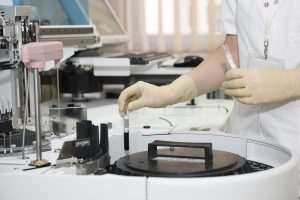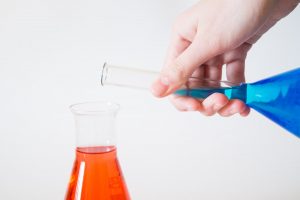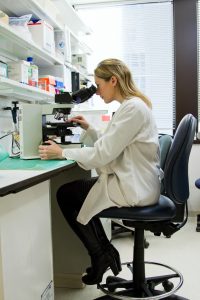Colloidal Silver | Silver Colloids
Colloidal Silver | Silver Colloids

The second table is arranged in ascending order of percent of labeled value by product grouping. Eventually, we hope to test all products that either claim to be colloidal silver or are colloidal silver.
Higher Values are Better
Lower Values are Better
Colloidal Silvers Product Reports Table
Ionic Silver Product Reports Table
Silver Protein Product Reports Table
Notes:
Column 1. Product Name and concentration in parts-per-million(ppm) on label.
Column 2. Particle surface area= value from lab report.
Column 3. Efficiency Index = Divide column 2 by total ppm value from the lab report and multiply by 1000.
Column 4. Price Cents/mL = Divide product price ($/oz) by 29.5734 and multiply by 100.
Column 5. Price Cents/cm2 = Divide 1 by column 2 and multiply by column 4.
Column 6. mL of product required for a constant particle surface area. Normalized value is calculated by dividing the largest column 2 value (104.7) by column 2.
Column 7. cm2/$ = Divide 1 by column 5 and multiply by 100.
In the table below, the Metal Content indicates the accuracy of product labeling. A value of 100 percent means the label accurately describes the metal content of the product. Values near zero indicate that the product contains very little or none of the metal content indicated on the label.
Values that are significantly above or below 100 (highlighted in red) indicate the manufacturers inability to adequately control the concentration (ppm) of the product. This could be the result of poor quality control or the lack of capability to measure concentration.
It seems clear that some companies are not properly measuring the silver concentration in their products. There is a common misconception that silver concentration can be determined by measuring the electrical conductivity. This erroneous belief is fostered by the companies that sell “colloidal silver” generators to the home hobbyists and also sell TDS (Total Dissolved Solids) meters that they claim can be calibrated to measure ionic silver content. TDS meters measure the electrical conductivity of the solution, not silver content. Any substance that increases the electrical conductivity will cause the TDS meter reading to increase. This may or may not have anything to do with the ionic silver concentration. The products shown above that contain little or no silver all have electrical conductivity values that indicate the presence of water soluble salts that would increase the TDS reading without silver being present. We speculate that these companies are relying on such measurements in an attempt to determine the silver content. Electrical conductivity cannot be used to determine silver concentration.
Accurate determination of silver concentration requires the use of either an atomic absorption/emission spectrometer or a mass spectrometer. Most laboratories use either atomic absorption or atomic emission spectrometers because they are less expensive than a mass spectrometer (ICP/MS). The measured values reported on this web site were made using an atomic emission spectrometer, specifically an Inductively Coupled Plasma/Atomic Emission Spectrometer (ICP/AES). See Determining Properties for technical details about how the laboratory analysis is performed by CSL.
When an FDA laboratory determines metal concentration they use either and ICP/AES or an ICP/MS whose readings will match very closely the values that are indicated on the lab analysis pages.
Potentially dangerous ionic silver products – those containing nitric acid!
Ionic silver products which have a low silver concentration while at the same time have high electrical conductivity will generally have a low pH value (acidic). These products will quite often be found to have a high nitrate (NO3) concentration as well. This unique set of properties generally indicates that the process used to produce the product involves arcing a high voltage AC current through the air to the surface of the water. Since air is 80% nitrogen, the high voltage arc through nitrogen produces nitrogen dioxide (NO2) which combines with the water (H2O) to form nitric acid (HNO3). This method is considered bogus in the extreme and produces a product that may contain significant amounts of nitric acid and is therefore potentially very dangerous to ingest. This ill advised process was developed experimentally in the early days of colloidal silver research and was adopted by some manufacturers who apparently did not have the requisite knowledge to understand that they were making nitric acid. Unfortunately, this method is still in use today by some producers who refuse to acknowledge that they are producing a potentially dangerous product.



When the total silver concentration (ppm) reported on the lab analysis page indicates a value that is far below the value on the product label, carefully read the lab analysis and look for the following:
2. Low pH values– pH values below 7 are acidic, values above 7 are basic and exactly 7.0 is neutral. Products containing nitrate (NO3) will be acidic and typically have values between 1 and 4. An acceptable pH value would generally be considered to be in the range of 6.5 to 7.5.
3. No silver particles present– nitric acid will dissolve silver particles so no silver particles will be present in products that contain nitric acid.
4. Presence of nitrate (NO3) – When a nitrate determination has been made for a given product the value of NO3 expressed in parts-per-million (ppm) of nitrate will be included on the lab analysis page.
At the moment, not all lab analysis pages have nitrate test values shown. We plan to perform the nitrate tests on products that have positive indication for items 1 to 3 above. The nitrate test results will be added to lab analysis pages when they are completed.
At the moment, not all lab analysis pages have nitrate test values shown. We plan to perform the nitrate tests on products that have positive indication for items 1 to 3 above. The nitrate test results will be added to lab analysis pages when they are completed.
Each manufacturer whose product appears in the tables and reports on this web site has been notified by e-mail and provided with a link to the detailed laboratory analysis of their product. At time of notification the producer may dispute the findings of our laboratory with regard to the determination of the measured values. The lab personnel are more than willing to discuss the results of our analysis should any company whose products are reported here choose to take issue with our laboratory procedures, suitability of equipment used, calibration standards, or experience of the laboratory staff. Not a single lab analysis has been disputed as of this date.
Not a single lab analysis has been disputed as of this date, and manufacturers cannot claim ignorance about the contents of the products they are selling.
Some of the products tested contain such a small fraction of the labeled value (see Metal Content chart above) that those products would generally be considered to have misleading and/or deceptive labeling by the Consumer Protection Department of various state governments. The sale of these mislabeled products is clearly a violation of the state consumer protection laws as well as a violation of the Federal Trade Commission regulations. If you have purchased one of these products, you might want to consider filing a complaint with the consumer protection department of the state where the manufacturer is located. You also might want to consider sending an e-mail to the producer and ask them why they continue to sell a product whose label misrepresents the contents of the bottle.
Donate a product for testing – Products that are commercially produced and sold to the public may be donated by for testing; the test results will be published on this site. Products donated for lab analysis and inclusion in our reports must be in a new factory sealed bottle to avoid the possibility of contamination. The scientists at the Colloidal Science Laboratory, Inc. will perform a uniform set of analytical measurements and report the results in the standard format as shown on the Commercial Product Report pages of this site. The lab analysis is done on a time available basis by laboratory personnel. Products submitted for analysis will not be returned. Products for analysis can be submitted to this address.
